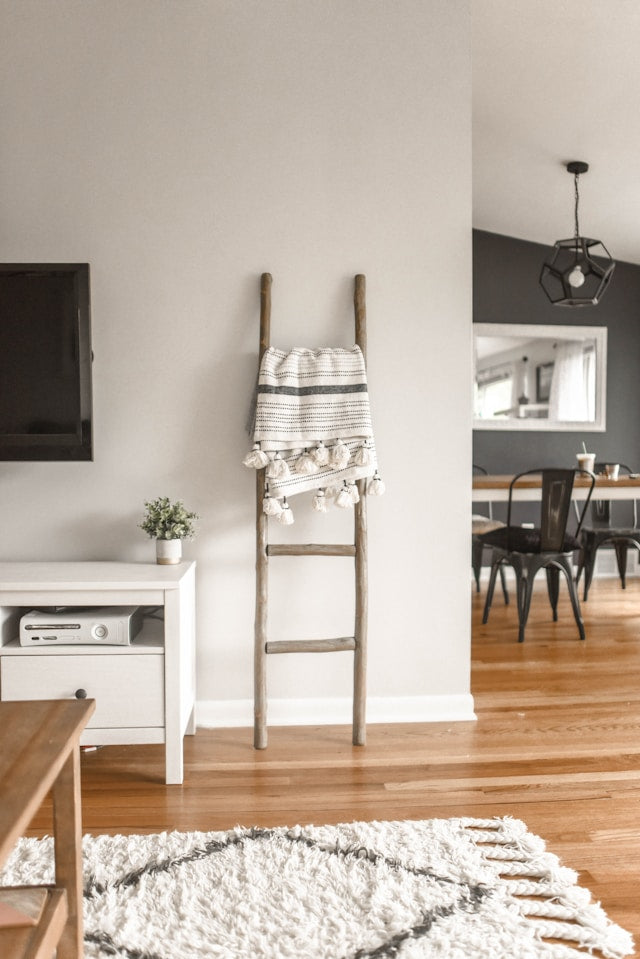
Small Room Colour Tips
Share
When decorating a small room, the right choice of colours can make a significant difference in how spacious, cosy or inviting the room feels. Here are some small room colour tips to help you create a visually appealing and comfortable environment.
1. Opt for Light and Neutral Colours
Light colours, such as whites, creams, soft greys and light pastels, can make a small room feel larger and more open. They reflect more light, making the room feel airy and spacious. Use a light colour on walls, ceilings and large furniture pieces. Soft whites, warm beige or pale grey can create an open space, especially when paired with natural light.2. Use Monochromatic Colour Schemes
A monochromatic colour scheme (using different shades and tints of a single colour) creates a seamless, uninterrupted look that can make a small room appear larger. Choose a base colour, such as soft blue or light grey and use lighter and darker shades of that colour throughout the room. Or if you choose a soft beige for the walls, use slightly darker and lighter shades of beige for furniture, curtains and decor. This creates a sophisticated and spacious feel.
3. Soft, Cool Tones
Soft, cool colours like light blues, greens and purples tend to recede visually, making walls appear farther away and thus expanding the perceived space. Paint walls in pale blue or mint green for a calming effect and use soft grey or lavender for a more modern feel. These colours are great for bedrooms, bathrooms and small living rooms. The picture above (point 2) is also good example of this point. Use soft, muted colours like blush pink, soft sage or light taupe on larger pieces of furniture, pairing them with crisp whites or light greys for a balanced and fresh look.
4. Consider an Accent Wall
An accent wall can add visual interest and depth without overwhelming a small room. It draws the eye to one area, creating a focal point that distracts from the room's limited size. Choose a darker or bolder colour for one wall (e.g., deep navy, forest green or charcoal grey) while keeping the other walls in lighter, neutral shades. This can be particularly effective in living rooms or bedrooms.
5. Use Contrasting Trim and Molding
Painting trim and molding in a contrasting colour (such as white trim on coloured walls) can create depth and dimension, making the room feel larger and more interesting. If your walls are a soft pastel or light neutral, paint the trim in a crisp white or a slightly darker shade of the wall colour to create contrast. This works well for highlighting architectural details.
6. Go for a High Gloss Finish on Ceilings
A high gloss paint finish on the ceiling can reflect more light, creating an illusion of height and making the room feel taller. Pair a high gloss white ceiling with matte or eggshell walls in a lighter colour. This technique is great for small rooms with lower ceilings, like bathrooms or hallways.
7. Create Vertical Stripes for Height
Vertical stripes can draw the eye upward, creating the illusion of height in a small room. Choose a striped wallpaper or use paint to create stripes in two shades of the same colour. This technique is particularly effective for small bathrooms or rooms with low ceilings.8. Use Colour to Define Zones
In small, multifunctional spaces (like studio apartments), colour can help define different areas without using bulky furniture. Paint one section of the room in a different colour to separate a workspace from a living area or a reading nook from the bedroom. Use rugs and accent colours to reinforce these zones.9. Incorporate Colour in Textiles and Accessories
If you prefer neutral walls but want to add personality and colour, use textiles and accessories like throw pillows, curtains, rugs and art. Choose colours from the same palette to create cohesion or add colour through bold cushions or artwork against a light, neutral background.10. Keep the Floor Colour Light and Consistent
A consistent, coloured floor throughout a small home creates visual continuity and makes the space feel larger and more cohesive. Use light wood, tile or carpet in similar shades throughout the house, especially in open plan spaces or small apartments.
Choosing the right colours for a small room can lift it from feeling cramped and cluttered to spacious and stylish. Light and neutral colours are generally the go to choices for making small rooms appear larger but don't be afraid to experiment with accent walls, tone on tone schemes or even dark shades in small doses. By understanding the impact of different colours and their strategic use, you can create a beautifully balanced and visually appealing small space that feels both cosy and open.
Next read: Colour Psychology
